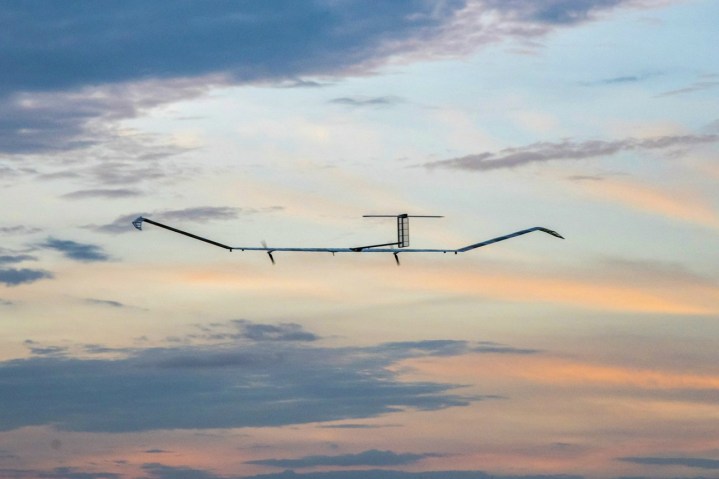
A solar-powered aircraft built by Airbus recently broke the record for the longest continuous flight.
On its first outing, the unmanned Zephyr S stayed aloft for 25 days, 23 hours, and 57 minutes after taking off from Arizona on July 11.
The achievement smashes the previous record — set by an earlier Zephyr prototype several years ago — by 11 days.
The Zephyr S harnesses the sun’s rays to power motors that drive its two propellers, a system that allows it to operate entirely on solar power. At night, the vehicle relies on power stored by its onboard batteries during daylight hours.
The Airbus creation flies at an altitude of 70,000 feet, way above weather systems and conventional air traffic. “The only civil aircraft that used to fly at this altitude was Concorde, and only the famous military U2 and SR-71 Blackbird could operate at similar levels,” the aerospace giant said in a release.
Sporting a 25-meter (82-foot) wingspan and tipping the scales at just 75 kilos (165 pounds), the flimsy looking aircraft was built at a facility in Farnborough, England.

The ability of the Zephyr S to stay in the sky for such a long period of time — the goal is to keep it aloft for months at a time — has prompted Airbus to describe it as “not quite an aircraft and not quite a satellite,” preferring instead to call it a “pseudo-satellite.”
Indeed, the plan is to offer companies satellite services that are cheaper to launch and maintain than space-based options. The first customer for the aircraft has been confirmed as the U.K.’s Ministry of Defence.
Airbus says its solar-powered aircraft has the potential to provide a wide range of applications, including reconnaissance missions, maritime surveillance, border patrol missions, communications, and also disaster management, helping, for example, to monitor the spread of wildfires or oil spills.
‘Significant milestone’
“This very successful maiden flight represents a new significant milestone in the Zephyr program,” said Jana Rosenmann, head of unmanned aerial systems at Airbus.
Rosenmann added that the team will shortly begin preparations for further Zephyr S flights later this year from its new operating site at the Wyndham airfield in Western Australia. There are also plans to introduce a more powerful Zephyr T aircraft.
Building a machine of this nature is clearly no mean feat. Facebook, for example, recently ended development of a similar vehicle following four years of development. The aim had been to use the solar-powered “Aquila” aircraft to bring internet connectivity to communities in remote parts of the world, but numerous engineering challenges, as well as a crash during a test flight, prompted the company to abandon its program and instead seek partnerships for the project.
Editors' Recommendations
- End of an era as Airbus delivers its final A380 superjumbo
- Alphabet’s Loon balloon sets new record for longest stratospheric flight
- Look, no hands! Airbus nails autonomous takeoff in move toward pilotless jets
- Solar-powered Lightyear One claims to break new ground in aerodynamics
- The U.S. Air Force’s secretive space plane ends record-breaking mission


